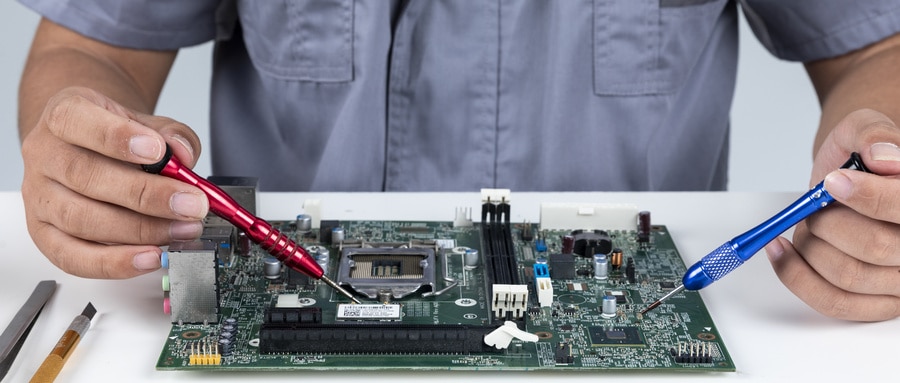Unveiling the Green Mystery: Why is PCB Green?
PCBs (Printed Circuit Boards) have become an essential component of modern electronics ranging from computers and televisions, smartphones and digital watches – we use every day. Yet while these boards may seem ubiquitous, most of us rarely give them much thought; have you ever noticed their distinctive green hue?
Uncovering the causes may require investigating the history of electronics manufacturing, understanding specific material properties, and considering psychological implications associated with color choices.
Let us first be clear on one point: PCBs do not inherently need to be green; rather, their hue is dictated by the solder mask – an adhesive protective layer applied over them – applied as protective cover. The base color of this solder mask typically amber, depending on its composition of epoxy resin and glass fiber raw materials whereas its green hue comes from additional materials added into its mix.
Why is PCB Green? The answer lies within history.
Bakelite Corporation pioneered PCB production during its early days, standardizing the green hue we now associate with circuit boards. Bakelite was one of several key suppliers for glass-epoxy laminates – critical components in PCB construction – so choosing this hue for aesthetic purposes proved effective; eventually this “Glass Green” shade became common practice within electronics production and became associated with reliability.
Why is PCB Green? Green offers several practical advantages during production processes. It strikes a balance between reflecting and absorbing light, helping reduce eye fatigue for workers who must stare at boards for extended periods during manufacturing and inspection processes. Furthermore, greater contrast makes it easier to spot faults or errors on the board.

Why is PCB Green? Scientifically speaking, green solder mask has its advantages. Although not exclusive to green, the pigments used can improve heat resistance – something which aids device longevity by avoiding overheating, which may otherwise lead to component failure.
Consider also the psychological aspect: green is often associated with safety, stability and reliability — qualities we want from electronic devices. Although this explanation might seem less scientific than others, its effect cannot be ignored.
Why is PCB Green? Green stands out among PCBs due to its historical importance, practical advantages, and psychological impact; therefore making it the top choice in electronics today. Green’s iconic hue has cemented itself into the modern electronic landscape by protecting tradition while increasing functionality and guaranteeing resilience – three elements which PCB manufacturers recognize when selecting colors for PCB production.
Next time you encounter a green PCB, remember its significance extends far beyond mere aesthetics; its hue carries with it an everlasting legacy that symbolizes technological progress while acknowledging human factors and providing reliability in our digital era.
FAQ:
-
What does PCB color mean?
PCB color refers to the solder mask that is applied on top of the PCB to insulate the copper traces.
-
Why is PCB Green?
Green became the standard color for PCBs during their early development, largely due to its ability to reduce eye strain during inspection. However, the color of a PCB doesn’t affect its performance.
-
Can I get a PCB in different colors?
Yes, PCBs can be produced in a variety of colors including blue, red, black, white, and yellow among others.
-
Does the PCB color affect its performance?
The color of a PCB does not affect its performance. The performance of PCBs is determined by the materials used and its circuit design.
-
Why would I choose a non-green PCB?
Some companies choose to use non-green PCBs for reasons of aesthetic preference or component color coordination.
-
How is the color added to a PCB?
The color of a PCB is determined by the solder mask, which is usually an epoxy paint-like material applied over the metal traces.
-
Does the color of a PCB affect its cost?
While the material and manufacturing costs generally stay the same, certain colors might be more expensive due to lower demand or greater processing complexity.
-
Are there any disadvantages to using colored PCBs?
The only potential disadvantages would be the slightly increased cost for some colors and lower visibility of the trace layout compared with green PCBs.
-
Can I customize the color of my PCB?
Yes, many manufacturers offer options for custom colors, though this may affect the overall cost and production time.
-
Does the PCB color matter for electrical inspections?
Yes. Some colors, like white, can make inspecting the board more difficult, while darker colors like black can make it easier to see dust and other contaminants.
-
What color is best for heat dissipation?
Color does not significantly affect the heat dissipation of a PCB.
-
Does the PCB color matter for prototyping?
Prototyping normally has no specific color requirement unless it involves specific user interface or aesthetic considerations.
-
What happens if I don’t specify a color for my PCB?
If a color isn’t specified, most manufacturers default to green since it’s the most commonly used color.
-
Is there a color specification for industrial-grade PCBs?
Industrial-grade PCBs do not have a specific color requirement. The color chosen is often based on company preference or industry standards, where applicable.
-
Why are some PCBs white?
White PCBs are often used when there are LEDs involved, as the white background can help reflect light more effectively.























